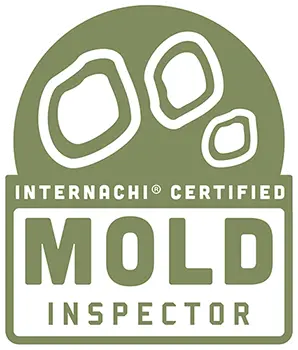Polybutylene Plumbing: The “Surprise Party” of Your Home
Ah, polybutylene plumbing. The plumbing system that was all the rage in the ’70s, ’80s, and ’90s, and then turned into the plumbing equivalent of a bad one-night stand — fun at first, but now a complete disaster you wish you could forget.
If your house has polybutylene pipes, you might want to grab a cup of coffee (or something stronger) because you’ve got some plumbing drama ahead. Let’s dive into why polybutylene pipes are the surprise party no homeowner ever signed up for.
The Slow Burn of Disappointment
Polybutylene pipes were like that new tech gadget you bought—seemed great at first, right? Super cheap, easy to install, and lightweight. What’s not to love? But, much like that gadget that breaks after the warranty expires, polybutylene plumbing starts out promising and then begins to fail in the most inconvenient ways possible.
You see, these pipes degrade over time when exposed to chlorine and other chemicals in your water. The result? Cracks. Leaks. Burst pipes. And let’s not forget the small, yet special, moments when your polybutylene plumbing decides to shower you with water at 2 a.m. because it’s had enough. Surprise! (And not the fun kind.)
The Silent Destroyer
Here’s the thing about polybutylene pipes: they like to keep a low profile, creeping behind your walls and under your floors, silently plotting their destruction. These pipes have a talent for failure that would make even the sneakiest of burglars jealous. Most people won’t even know there’s a problem until a burst pipe has turned their living room into a water park.
So, enjoy that sense of security while it lasts. Just know that behind those walls, your plumbing might be plotting the most unexpected and inconvenient “water feature” you’ve ever seen.
 Your Plumbing’s Middle-Aged Crisis
Your Plumbing’s Middle-Aged Crisis
You know how people go through midlife crises and make questionable decisions (hello, sports car, goodbye, common sense)? Polybutylene pipes are basically having a plumbing version of that. They started off looking shiny and new, but after a few decades of exposure to chemicals and UV rays, they just start to crack under pressure—literally. By now, polybutylene plumbing is like the guy at your high school reunion who shows up wearing a leather jacket and talks about how he was the prom king.
It’s Not You, It’s Definitely Polybutylene
If you find yourself blaming your plumbing every time something goes wrong, you’re not alone. You might even start questioning your own DIY abilities. “I swear I turned the valve correctly, why is there water everywhere?” Don’t worry. It’s not your fault. It’s polybutylene doing what it does best: letting you down when you least expect it.
But really, it’s not your plumbing that’s the problem. Polybutylene pipes have been on the outs for years, ever since they failed to live up to the expectations of being long-lasting and reliable. Think of it like a celebrity scandal—once the truth comes out, no one wants to touch it with a 10-foot pole.
Replacing Polybutylene: The Plumbing Version of a Break-Up
So, you’ve decided to replace your polybutylene pipes. Congratulations, you’ve officially decided to break up with that unreliable ex that’s been ruining your life for too long. Replacing polybutylene plumbing is like going through a messy divorce—you’ll have to rip out all those pipes, tear down walls, and put your house back together. But at least in the end, you’ll have a solid, dependable plumbing system that won’t leave you hanging.
It’s a lot of work, but sometimes you have to close the chapter on the bad decisions of the past (sorry, polybutylene) and start fresh. Sure, it might cost you, but the peace of mind is priceless.
Why Does This Matter?
Okay, okay, I know you’re probably sitting there thinking, “Why all the fuss? It’s just pipes, right?” Well, yes, but remember: when your pipes burst, water damage is not only messy but also expensive. The time, effort, and cost of repairing burst polybutylene pipes is like trying to fix a flat tire by replacing your entire car. It’s not ideal, it’s inconvenient, and it makes you wonder why you didn’t just invest in a more reliable system from the start.
Conclusion: Get Rid of the Drama
If your home is sporting polybutylene plumbing, it’s time for an upgrade. Consider replacing it with more modern, durable materials like PEX or copper. You deserve better, and your house does, too. Polybutylene pipes? They’re like that awkward ex you just can’t escape. But the good news is, you can finally kick them to the curb—and, with a little effort, move on to a healthier, happier plumbing future. And who knows? Maybe this time, you’ll find plumbing that actually keeps its
On a more serious note – this post is designed to be entertaining (and somewhat educational) article on polybutylene plumbing materials. It should be understood that home inspectors are NOT REQUIRED to identify polybutylene pipes during an inspection. Sometimes the material is very tricky to identify. Your home inspector is NOT going to claim the material as defective or faulty solely based on its presence and your inspector will not test the material for any weaknesses. However, many home inspectors will do their best to make you aware of its presence in an effort to help you avoid surprises down the road.

















